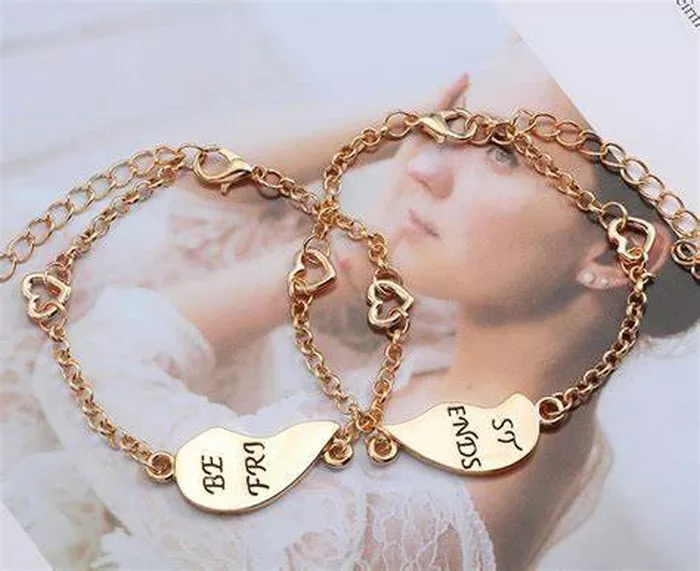Friendship bracelets, known for their colorful patterns and intricate designs, have a rich history that spans centuries and cultures. These bracelets symbolize friendship and connection, often given as tokens of affection and appreciation. But when exactly did friendship bracelets become popular, and what factors contributed to their rise in popularity? This article delves into the origins, cultural significance, and peak moments of popularity for friendship bracelets.
The Ancient Origins of Friendship Bracelets
The concept of using threads and cords to create decorative items has ancient roots. Early examples of braided and woven items can be traced back to various indigenous cultures around the world. For instance, the ancient Chinese and Native American tribes created intricate woven patterns that held cultural and symbolic significance.
In many Native American cultures, similar woven items were used for various purposes, including as adornments and trade goods. These early forms of woven bracelets were often made from natural materials such as plant fibers, animal sinews, and later, dyed threads. The practice of creating these items was not only a craft but also a way to pass down traditions and cultural stories from one generation to the next.
The Introduction of Friendship Bracelets to Western Culture
While the exact moment friendship bracelets became a distinct concept is hard to pinpoint, their introduction to Western culture can be attributed to the influence of Native American crafts and the global exchange of cultural practices. In the 1970s, the counterculture movement and a growing interest in indigenous arts and crafts brought friendship bracelets into the mainstream in the United States and other Western countries.
During this time, many people, particularly the youth, were drawn to handmade crafts as a way to express individuality and a desire for simpler, more meaningful connections. Friendship bracelets, with their vibrant colors and personalized designs, became an emblem of this era’s ethos.
The 1970s and 1980s: A Surge in Popularity
The late 1970s and early 1980s saw a significant surge in the popularity of friendship bracelets. This period marked the beginning of the bracelets’ association with the youth culture, particularly among pre-teens and teenagers. The bracelets were often made during summer camps, school activities, and social gatherings, fostering a sense of community and shared creativity.
The simplicity of making friendship bracelets made them accessible to a wide audience. All that was needed were some colorful embroidery threads, a few basic knotting techniques, and a bit of patience. The process of creating a bracelet was seen as a labor of love, with each knot symbolizing a shared moment or sentiment.
In the United States, friendship bracelets were popularized through various youth-oriented magazines and television shows. Instructions for making different patterns were widely available, and the bracelets became a common sight at schools and social events.
Friendship Bracelets in the 1990s: A Cultural Staple
The 1990s solidified friendship bracelets as a cultural staple among young people. During this decade, the bracelets transcended their initial niche and became a ubiquitous accessory. The explosion of pop culture, driven by music, movies, and television, played a crucial role in this phenomenon.
Pop icons and celebrities were often seen wearing friendship bracelets, further fueling their popularity. Music videos, teen magazines, and TV shows of the time often featured characters sporting these colorful accessories, making them a must-have item for fans.
See Also: Can Men Wear Ruby Necklaces?
One notable factor that contributed to the enduring popularity of friendship bracelets in the 1990s was their association with charity and awareness campaigns. Many organizations used the bracelets as a means to raise funds and promote causes, adding a layer of social responsibility to their cultural significance.
The DIY Movement and the Internet Era
As the 2000s approached, the popularity of friendship bracelets continued to thrive, bolstered by the rise of the DIY (do-it-yourself) movement. Crafting became a popular hobby, and the internet provided a platform for enthusiasts to share patterns, techniques, and tutorials. Websites dedicated to crafting, such as Pinterest and YouTube, became treasure troves of inspiration for friendship bracelet designs.
The internet also facilitated the global exchange of ideas and cultural practices, leading to the evolution of new patterns and styles. Enthusiasts from different parts of the world could connect, share their creations, and learn from each other, further enriching the craft.
During this period, friendship bracelets also became popular at music festivals and other social gatherings. The vibrant colors and bohemian aesthetic of the bracelets perfectly complemented the festival culture, making them a popular accessory among attendees.
Modern-Day Significance and Continued Popularity
Today, friendship bracelets remain a beloved and enduring symbol of friendship and creativity. While the ways in which they are made and shared may have evolved, their core significance remains unchanged. They continue to be a popular craft activity for people of all ages, from young children to adults.
In recent years, friendship bracelets have seen a resurgence in popularity, partly due to the nostalgia associated with the 1990s and early 2000s fashion trends. Many people who grew up making and wearing these bracelets are now revisiting the craft, often introducing it to the next generation.
Moreover, the handmade and personalized nature of friendship bracelets aligns with contemporary values that emphasize individuality, sustainability, and meaningful connections. In a world increasingly dominated by technology and mass-produced items, the simple act of creating and giving a handmade bracelet carries a profound sense of authenticity and thoughtfulness.
Conclusion
Friendship bracelets have experienced several peaks in popularity, each time adapting to the cultural and social context of the era. From their ancient origins to their modern-day resurgence, these colorful and intricate accessories have remained a cherished symbol of friendship, creativity, and connection. Their enduring appeal lies in their simplicity and the heartfelt sentiments they represent, making them a timeless tradition that continues to bring people together across generations and cultures.

